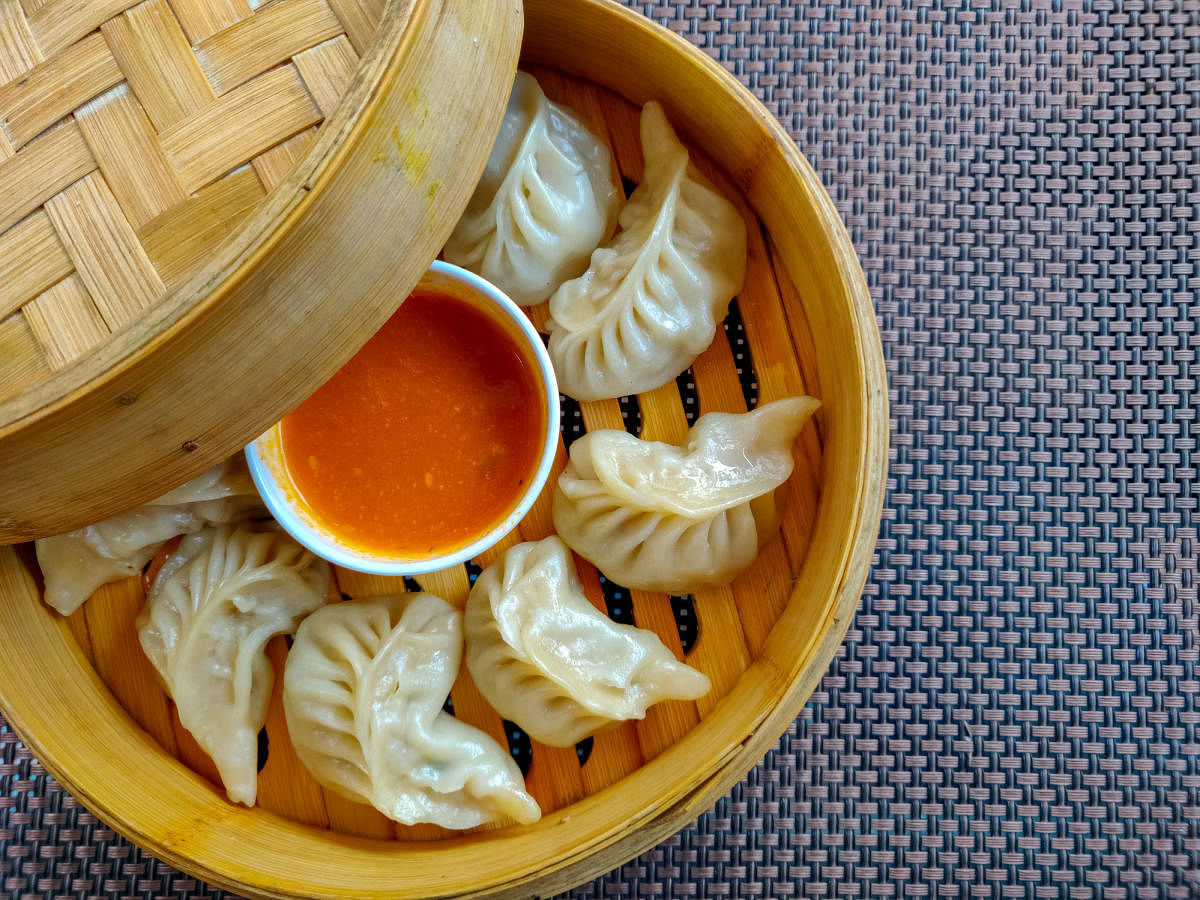
Few things conjure up the greatness of the momo. Yet, however, that Sunday, as I sat down to an elaborate feast of freshly steamed momos during the Momo Food Festival organised by a heritage restaurant in the Tibetan immigrants’ enclave of Majnu-ka-Tilla, Delhi, I felt that there was something exceptional about the momo.
Delightful dumpling
As I savoured the steamed, glossy, round momo stuffed with a flavourful minced lamb filling, the elderly lady owner of the restaurant delved into the origins of this tasty treat, “During the time of the Mongol Yuan Dynasty in Tibet in the 13th century, people felt that putting the minced lamb and scallions mixture subtly seasoned with our classic spices of yerma (ground peppercorns), zira kar-po (cumin) and sga smug (ginger) in a delicately pleated tsampa (barley flour) dough dumpling, and then steaming it in the mok-zang (momo steamer) was a delightful idea, and so was born our flavourful momo!”
Interestingly enough, the Tibetan momo, stuffed with a juicy, flavourful meat filling, had a magic touch – in fact, wherever the momo travelled, be it the neighbouring Himalayan kingdoms of Bhutan and Nepal as well as Ladakh, it adjusted itself to the local preferences. As a result, people looked upon the momo, which transformed into more innovative versions with different shapes, distinct filling mixtures and varied dipping sauces, as a delightful snack and also as a satisfying meal.
For a classic food aficionado like me, I was, in fact, drawn into the momo magic circle. As I tasted the square-shaped Hirshon momos, my mind travelled back to the time when these buckwheat flour, square-shaped momos stuffed with a juicy bok choy and datshi (yak milk cheese) filling were made during the time of Tibetan Buddhist Ngalops settled in Bhutan, way back in the early 5th century.
Interestingly, in recent times, the Hirshon momos, with an interplay of Bhutanese and Tibetan flavours, has been the centre of attraction. In fact, a close Bhutanese acquaintance of mine explained: “For the Hirshon momo, much like the Tibetan momo-making process, instead of the original meat filling, a mixture of greens like mustardy bok choy leaves and slightly sweet datshi seasoned with Bhutanese ground spices of tshengenmeto (Bhutanese blue poppy seeds) and ema kam (Bhutanese dried red chillies) as well as Tibetan spices of toasted yerma or Sichuan peppercorns and ginger is placed at the centre of the buckwheat flour dough rectangles. This is followed by folding the dough to make squares, then pleating the edges, and ultimately steaming them in bamboo steamers.”
Backing the bamboo steaming process, she explained, “Bamboo steaming of Hirshon momos matters a lot — it elevates both the Bhutanese and Tibetan flavours. In fact, it’s the fusion of flavours that make the Hirshon momos a popular mid-morning snack.”
Evolving tastes
Next, I came across Kothey momo. As per fascinating history records, with the arrival of Newar merchants and artisans from Lhasa in Nepal in the 17th century, the round, pleated momo dumpling transformed itself into the innovative Kothey momo variety we seee today: the round momo is first stuffed with a juicy, ginger-flavoured pork filling and steamed in the traditional mucktoo steamer, after which it is pan-fried to a crispy, golden brown perfection. In fact, today, a plate of delicately pan-fried Kothey momos served with a tangy dipping chutney of tomatoes, cilantro and toasted sesame seeds is a delightful treat.
Also, a plate of Jhol momos, steamed Tibetan-style chicken momos, dunked into a jhol (a chutney with Nepalese hog plum fruit called lapsi, cumin seeds, tomatoes and sichuan pepper) is highly popular as a lunch-time dish.
Then, moving to tea-time snack delights like the Ting momo, I learnt that with the nomadic Tibetan Changpa tribe moving into Ladakh in mid-seventh century, the original Tibetan momo had a dramatic transformation — in fact, it switched over to the soft, puffy Ting momo version we see today. In the recent times, for re-creating the magic of the Ting momos, kitchen chefs follow traditional styles of intricately creating dough layers for forming rose-shape momos, and then steaming them. Furthermore, instead of the accompanying side dish of dreythuk porridge, a plate of rose-shaped Ting momos is served with the tangy tomato & chilli Sepen sauce.
Also, for Sikkimese Thaipo momos served with the Dalle Khursani chilli peppers sauce, I brushed up on my momo knowledge a bit more and learnt that with the migration of the Tibetan Bhutias to Sikkim way back in the 17th century, the momo came to be interpreted as Thaipo momo, a plump round dumpling with a flat back. In fact, a closer look revealed that the Thaipo momo is much similar to the steamed Tibetan momo, except for some slight variations: like the addition of baking soda to the flour-water mixture while preparing the dough; instead of the original meat filling, these momos had a vegetarian filling of cabbage, carrots and capsicum, flavoured with garlic and a spice mix of pepper and dried red chillies. What more, even the dipping sauce is different. Instead of the Tibetan Sepen sauce, there’s the Sikkimese Dalle Khursani cherry chilli peppers sauce here.
Indeed, the humble momo has evolved a great deal in terms of shape, cooking styles, flavours, dipping sauces, and more.